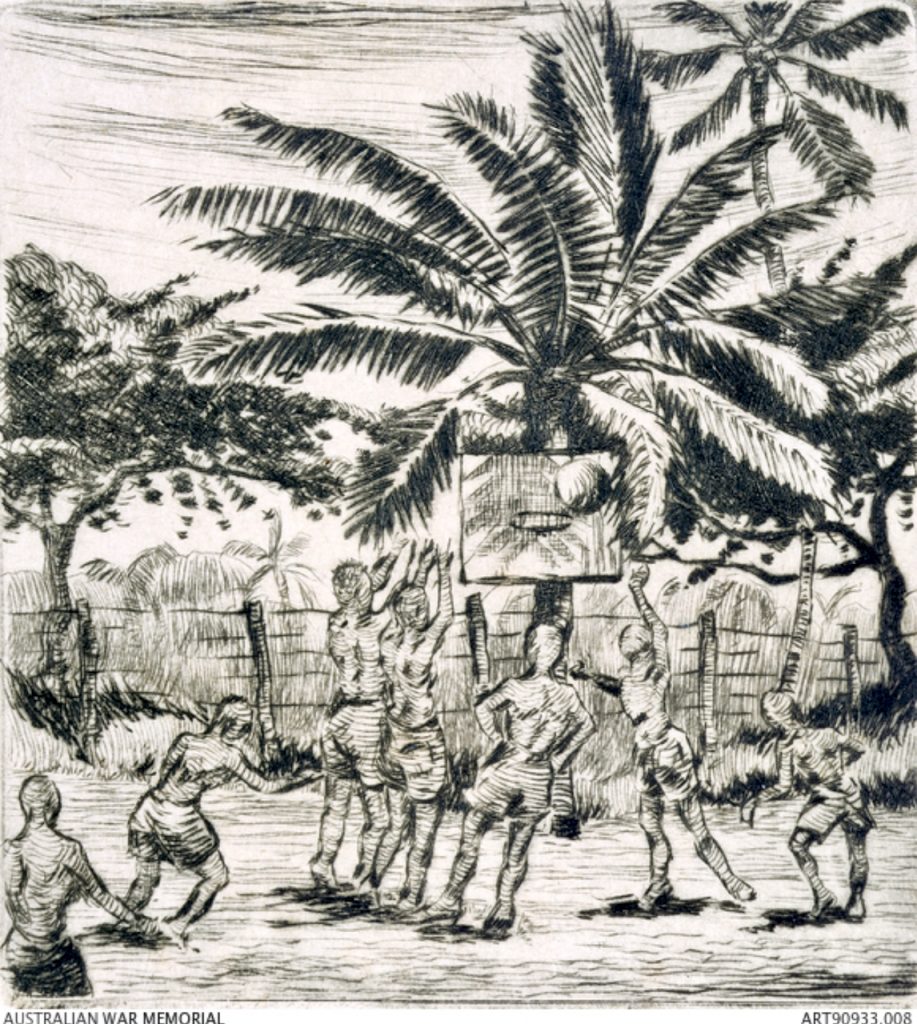Makasura – Java – Camp No. 5 – and departure of Java Party No. 6 to Singapore
Weary Dunlop was the senior Australian POW at this camp.
This camp was just to the south of Meester Cornelis on the Meester Cornelis-Tjilititan Road. In May 1943 there were still about 500 British, Dutch and Australians POWs here working the vegetable market garden.
It was from this camp that men who were included in Java Party No. 6 (Dunlop Force) departed for Singapore and Thailand on 4th January 1943. They had been transferred to Makasura from Bandoeng on 6th November 1942. This might then tell us that those members from 2/4th that were on Java No. 6 Party were likely at Bandoeng for most of their stay on Java. Desmond Jackson tells us that this camp at Makasura was located in a kapok plantation and describes the camp.
“A pleasant, heavily populated locality, abundant with tropical growth. High barbed-wire fences divided the camp into three small sections comprising a barracks area, a parade ground and an exercise yard. We spent most of our time in the barracks area where our living quarters were particularly crude bamboo huts”.
Read about POW Camps Java
Reference to https://www.indischekamparchieven.nl/
Java Party No. 6 (Dunlop) were to remain here through Christmas 1942. The camp was crowded however the men were able to entertain themselves with sports afternoons in a limited open space. There were two parades daily and of course insufficient food.
By 28 December 1942 it was obvious the movement of men was about to happen when the Japanese requested specimens of stools from dysentery and diarrhoea patients and list of men suffering deficiency diseases. The men’s cards were marked ‘S’ or ‘J’.
On 4 January the Australians were called out in groups of 50 and to march out at night 8 kms to Meester Cornelis Station as the days were too hot. It took the men 2 and a quarter hours to march in the dense blackness. The men then were loaded onto the train to Tanjong Priok arriving at the wharf at 7.00 am.
At the wharf the men saw ‘Usu Maru’ which was a rusty, coal-burning hulk with a single funnel. It was estimated to be between 6,000 to 7,000 tons. As the men walked up the gangway they were sprayed with carbolic solution and marched down ladders into two separate holds.
There were POWs from Bicycle Camp Batavia also included in this draft to Singapore.

Seven male figures, wearing only shorts, playing basketball in an area with palm trees and a fence. One figure has thrown the ball towards the goal ring. This print is included in a folio of drypoints that were made from the original drawings that Ray Parkin entrusted to Weary Dunlop while they were prisoners of war (POWs) together on the Burma-Thailand railway. Dunlop delivered the collection of drawings and paintings to Parkin on his return to Melbourne. As an expression of gratitude to Dunlop for hiding the drawings at great risk to his own safety, Parkin proceeded to make prints of the drawings and presented them to Dunlop in a bound folio in 1956. A single watercolour, dated 1943, is the only original painting from Parkin’s POW experience to be included in the folio.
The journey to Singapore took nearly 3 days before ‘Usu Maru’ anchored off Singapore on the evening of 6 January. The next day the ship berthed at Keppel Harbour and the men were taken by truck and allocated accommodation at Changi.
The men from Java were quick to notice the POWs at Changi were all well turned out in uniforms, boots, neat hair and no beards!
The Java Party No. 6 quickly became known as the ‘Java Rabble’ under the command of Weary Dunlop. It was here Dunlop clashed with Galleghan and the ‘Java Rabble’ left Singapore for Thailand with little more than the rags on their backs, many without shoes.

